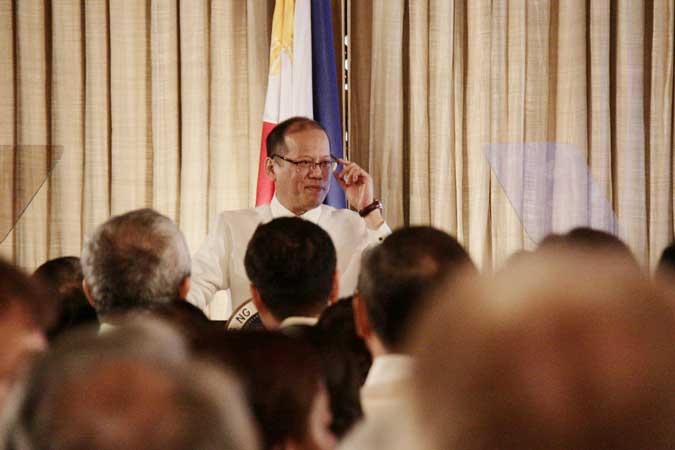
Thinking Beyond Politics
By Renato De Castro

The Filipino nation mourns the passing of former President Benigno Simeon Aquino III. As the 15th president of the Philippines, Filipinos will remember him for his anti-corruption campaign, his willingness to listen to dissenting views, his belief and practice of good governance, and his deep respect for the rule of law and human rights. For his foreign policy, the world will always think of him as the Philippine president who stood up against Chinese might in the West Philippine Sea dispute.
Paradoxically, at the start of his term, former President Aquino showed little interest in foreign relations. In his inaugural speech in late June 2010, he declared that he would go on a foreign trip only addressing urgent “domestic matters” and that foreign trips proposed by the Department of Foreign Affairs (DFA) must have value, be cost-effective, and must be prioritized accordingly. He wanted to settle pressing domestic problems before foreign engagements. President Aquino’s tendency, however, was overtaken by unexpected events in mid-2010, which would force him to pay attention to foreign policy matters more than he initially anticipated.
On March 2, 2011, two Chinese patrol boats harassed a survey ship commissioned by the Philippine Department of Energy to conduct natural gas exploration in the Reed Bank (also called Recto Bank). Stunned by this maritime encounter within the Philippines’ EEZ (exclusive economic zone), the Aquino Administration filed a protest with the Chinese embassy in Manila. A Chinese embassy official, however, insisted that China had indisputable sovereignty over the Nansha (Spratlys) Islands and its adjacent territory. Beijing then demanded that Manila first seek Chinese permission before it could conduct oil exploration activities even within the Philippines’ EEZ.
From April 9 to June 18, 2012, the Philippines squared off with China during the impasse at the Scarborough Shoal. During the standoff, China did not show any desire to de-escalate the crisis. After the two-month impasse, China and the Philippines withdrew their civilian ships near the shoal as agreed upon in a deal brokered by the US. Subsequently, however, China redeployed its maritime surveillance ships to block Philippine access to the shoal and has maintained a presence there ever since. When the tension at the Scarborough Shoal eased, crew members of China Maritime Surveillance vessels constructed a chain barrier across the mouth of the shoal to block any Philippine access to it. China also deployed these ships to protect the fleet of Chinese fishing boats operating deep inside the Philippines’ EEZ.
DISAPPOINTMENT WITH ASEAN
While Philippine and Chinese civilian vessels were in a tense stand-off, the Aquino Administration elicited ASEAN’s diplomatic support for its proposal to create a “Zone of Peace, Freedom, Friendship, and Cooperation.” This proposal sought to clarify the maritime boundary claims in the South China Sea, as well as to turn the disputed areas into special enclaves where disputing parties could jointly develop projects. China, however, did not want the issue to be multilateralized, preferring to resolve the disputes bilaterally. Furthermore, the Philippine proposal for delimitation of maritime boundaries involved clarification of China’s ambiguous and expansive nine-dash line claim.
Asserting its power and clout within the ASEAN, China, through Cambodia, prevented the organization from releasing a joint communique during the 45th ASEAN Annual Meeting in Phnom Penh. This was the first time in ASEAN’s 45-year history when the ministerial meeting did not issue a formal communique. This unfortunate incident was a result of Cambodian Foreign Minister Hor Nam Hang’s objection to any mention of the 2012 stand-off between Filipino and Chinese civilian vessels near the Scarborough Shoal and the Vietnamese and Filipino proposals to include the various marine incidents involving their ships and Chinese patrol boats. Cambodia insisted that bilateral disputes with an outside power were not an appropriate subject for an ASEAN communique, although such disputes had been discussed in various ASEAN meetings. Cambodia appeased Beijing by minimizing the internationalization of the South China Sea dispute.
CHALLENGING CHINESE MIGHT IN THE SOUTH CHINA SEA
In January 2013, the Philippines filed a statement of claim against China in the Permanent Court of Arbitration (PCA) at the Hague in The Netherlands. In its statement of claim, the Philippines made it clear that it was requesting the PCA to issue an opinion on the following issues: a.) whether China’s maritime claim in the South China Sea based on its so-called nine-dash line is valid or contrary to United Nations Convention on the Law of the Sea (UNCLOS); and b.) whether the Scarborough Shoal, Johnson Reef, Cuarteron Reef, and Fiery Reef, which are submerged features and are below sea level at high tide are islands or rocks under Article 121 (3) of the Convention.
China refused to participate in the international mediation and openly expressed its opposition to the Philippines’ filing of a case with the arbitral tribunal. Despite China’s refusal to participate in the proceedings, the arbitral tribunal unanimously decided that it had jurisdiction over the maritime dispute between China and the Philippines in the South China Sea. In its ruling, the tribunal held that both the Philippines and China are parties to the Convention and are bound by its provisions on the settlement of the dispute. The tribunal’s ruling meant that it would hold further hearings to settle the highly contentious territorial row between the Philippines and China. Realizing early on ASEAN’s limits as a regional security organization, the Aquino Administration found it imperative to rely on international arbitration in confronting the China challenge in the West Philippine Sea.
Three years later, the arbitral tribunal, through the July 12, 2016 ruling, rejected the legality of China’s nine-dash line claim and its efforts to control the disputed waters through raw power. Through the 2016 arbitral ruling on the South China Sea dispute, President Aquino showed the world how justice in global society could be realized through foresight, decisive action, and faith and respect for the rule of law.
Dr. Renato De Castro is a Trustee and Convenor of the National Security and East Asian Affairs Program, Stratbase ADR Institute.